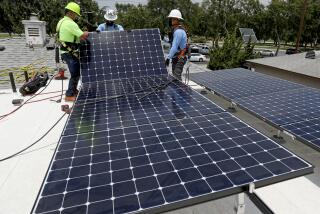Green Home Tax Incentives
While many homeowners may grumble over the price tags on energy-efficient appliances and products, federal tax credits are making going green more affordable. In 2006 the Treasury Department and the IRS issued guidance (Notice 2006-26), which allowed consumers buying energy-saving appliances to be eligible for tax benefits. While you won’t get all your money back, the government will issue you a tax credit. To qualify, the product must meet or exceed the requirements of the 2000 International Energy Conservation Code on the certification that homeowners claim credits for purchases that make their homes more energy-efficient.
Unfortunately for existing homes, the credit was made available only for purchases in 2007. If you didn’t install the energy-efficient appliance before January 1, 2008, you don’t qualify for the credits. If you’re purchasing or building a new home, you can still qualify for tax credits on products bought before January 1, 2009. Many states and cities across the country have also begun offering special tax incentives, so check with your local municipalities. Manufacturers offering energy-efficient items, such as insulation or storm windows, can also assure their customers that their products will qualify for the federal tax credit if certain requirements are met.
These items are eligible:
• Insulation systems that reduce heat loss/gain
• $50 for purchasing an air-circulating fan
• $150 for installing a high-efficient furnace or boiler
• $150 for each qualified natural gas, propane, or oil furnace, or hot water boiler
• $200 for installing energy-efficient windows
• $300 for purchasing a high-efficient central air conditioner, heat pump or water heater
The total credit for each year cannot exceed $500, and no more than $200 can be used towards windows.
You can also earn larger tax credits by purchasing more high-end products:
• A tax credit up to $2,000 for the purchase of solar water-heating equipment or solar panels. You do not get this credit if you use either product to heat a swimming pool or hot tub. • Up to $1,000 per kilowatt for the purchase of a fuel-cell power plant. The plant must generate at least 0.5 kilowatts of power.
More Incentives
You can find additional incentives for energy-efficient homes from these resources:
• The Database of State Incentives for Renewables & Efficiency (DSIRE), connects you to local, state and federal utility incentives available for switching to renewable or efficient energy use. It is a nonprofit project funded by the U.S. Department of Energy through the North Carolina Solar Center and the Interstate Renewable Energy Council.
• Find local incentives for building LEED buildings, including homes, through the U.S. Green Building Council public policy database. The U.S. Environmental Protection Agency links to many of the sources of funding for green building that are available nationally and at state and local levels for homeowners, industry, government organizations and nonprofits in the form of grants, tax credits, loans and other sources.
• The federal government’s Energy Star Web site connects consumers, home builders and others to federal tax credits for using energy-efficient products.
• The Internal Revenue Service web site provides specific details on federal energy efficiency tax credits.






